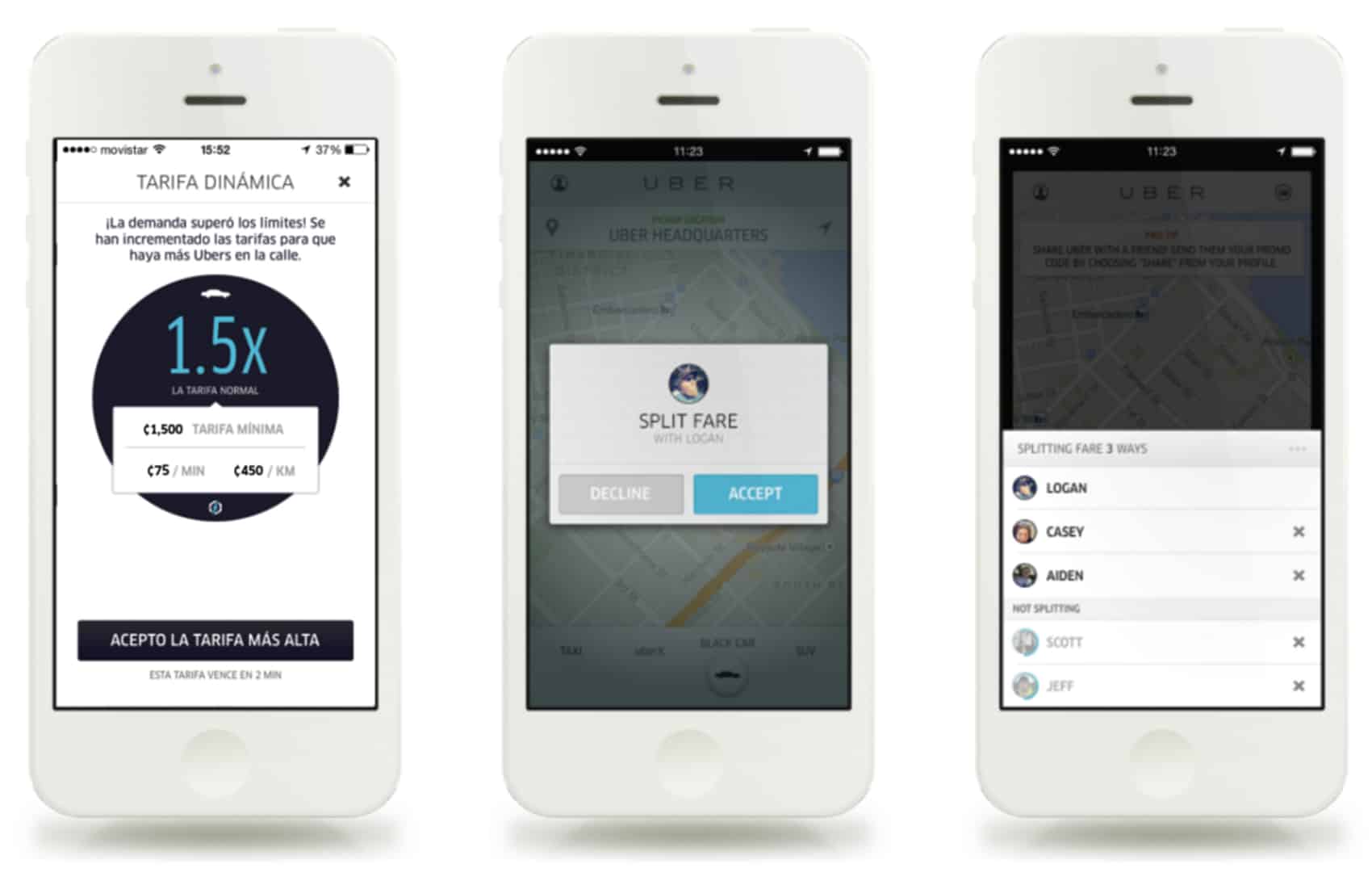It was too good to last. Uber’s “surge pricing” — a multiplier added to the fare depending on demand for rides — started in Costa Rica on Thursday, according to a post from the ride-hailing service.
Since Uber Costa Rica went online in August, the company has been signing up new drivers and building a customer base without applying the multiplier to its fares. The result — at least up until this point — has been some very cheap fares.
The algorithm Uber uses to determine pricing is secret (along with the number of registered Uber drivers on the road) and the company has faced criticism in the past over the opacity of the pricing and whether surge pricing works as promised.
Surge pricing applies a market approach to the ride, so when it rains and floods half of San José, for example, demand for rides spikes — and so does the price. The idea is that as prices go up there’s a greater incentive for drivers to get out on the road and less incentive for people to request a ride, which could mean less of a wait for those who want to pay the premium.
A paper presented at the Internet Measurement Conference in Tokyo in October found that surge pricing doesn’t always work as its supposed to, according to National Public Radio. Surge pricing can have the perverse effect of sending drivers away from the areas of high demand. The demand is often satisfied quickly, leaving drivers with no fares.
During surge pricing, riders need to tap a button on the app to acknowledge that the rate is higher than the base rate. Uber Costa Rica released a post on its blog recommending that if riders want to avoid surge pricing, they wait 10 minutes before requesting their ride or split the fare with a friend.
A survey from the polling company Unimer found that 75 percent of Costa Ricans surveyed said they would use Uber. More than 50 percent of the 1,193 Costa Ricans over age 18 surveyed in August said that Uber was cheaper than traditional red taxis. That number jumped to 67 percent for regular users of the app. The survey was taken soon after the service started here.
Uber will have to hope that the introduction of surge pricing doesn’t scare away that 50 percent of Costa Ricans who think it’s a cheaper option than regular taxis.






